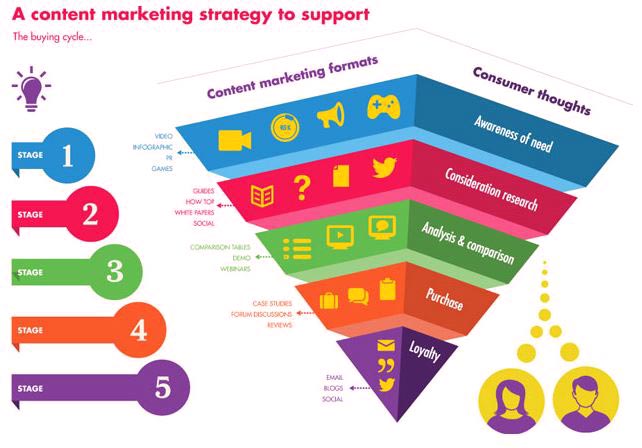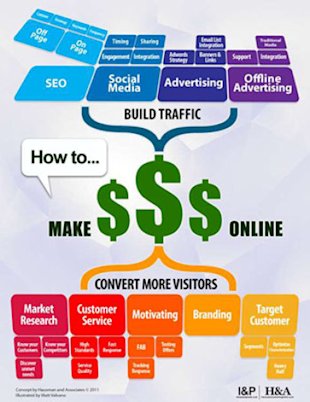
So, you have decided to launch your own digital advertising strategy. What's next? This article will guide you through each step of the process from selecting your channel to researching your audience. This article will also show you how to create a customer journey and split test your strategy. Once you have this information, your brand will know if it is working. If your strategy is not working, you are not the only one. There are many businesses that have faced the same question.
Researching your audience
Research your audience is key to creating a digital marketing strategy. You can do this through quantitative research, which involves surveying a large population and generating statistical results. To create an email marketing campaign targeted at a specific audience, it is important to understand their needs and interests. Similarly, you can look at their purchase history to determine their purchasing behavior. You can then target your marketing message to specific audience segments.
To create a successful digital marketing strategy, you need to understand your audience well. Without research, you'll be blind to their desires and needs. Luckily, research can help you identify those issues and develop personalized content for them. It's possible to identify their needs and make your marketing more effective by conducting research. Here are some tips on researching your audience.
Interviews: To understand your audience better, you can conduct surveys. Surveys: You can email existing customers and publish customer reviews via social media. Interviews are also possible. These surveys will provide valuable insights into the personality of your audience. You can then create your digital marketing strategy. It's important to research your audience, but it is equally essential to create a compelling campaign. This will allow you to increase sales and engage your audience.
Segmentation: You can tailor your message to your audience by understanding their preferences, interests, lifestyle. Segmentation will allow you to craft a stronger message and interact with your customers in a more personal way. Adidas sent an email with a gender specific message, while the clothing brand categorised its audience based on gender. Customers buy jeans in large numbers, so a survey asking them how they rate the retailer would result in an average rating of 8/10.
Choose your channels
It is essential to choose the right digital marketing channels for your product or services promotion. The primary goals, competition, budget, and other factors should guide your choice. Different channels can produce different results so make sure you choose the right channel for you. Your choice of channels will impact the type of content that you share and how you format your ads. Content marketing is still the king of marketing and will always be relevant, but if you want to reach your audience, there is no doubt that you must take advantage of this technology.

The goals of your company will determine the decision to use a specific digital marketing channel. Determine your long-term and short-term goals. Long-term goals could include increasing revenue by 20% in the next two-years. Short-term goals might include generating 400 qualified leads within six to eight months, or increasing website traffic by 70% in just eight months. To determine which channels are best for your business, identify both the short-term as well as long-term goals.
Before you decide which channels to use, make sure to analyze the effectiveness of each of them. Each channel has its strengths, weaknesses, freedoms, and limitations. Determine the types of content that you will need for each channel and its costs. Make sure to use all your available budget before you start using new channels for your digital marketing strategy. You should use Twitter or Facebook to generate buzz.
Designing a customer journey
A customer journey map is an essential element of any digital marketing strategy. These maps outline the customer's journey from decision to action. The customer journey map serves many purposes. For example, it can show the customer's journey from the initial stage of the sales funnel up to the moment when they become lifelong customers. The customer journey maps can also be helpful in identifying areas that can be improved.
A customer journeymap is basically a prospect’s journey from inquiry to purchase. It assists marketers in mapping out the questions and pain points that they encounter as they go. The higher-funnel levels are designed to increase awareness and create interest. The final stages are dedicated to building brand loyalty. This should start with awareness.
After researching and learning about a brand, potential customers begin the information-gathering phase of the customer journey. Initially, they don't know who you are, but they know what they want. This phase of the Customer Journey should include content that assists customers in making informed decisions. Additionally, customers can get a free trial period from brands to overcome any last hurdles during their buying journey.
A customer journey map will help marketers target their advertising efforts by understanding the steps customers take to buy a product or service. Each stage of the customer journey should have its own buyer persona. Marketers can adjust their marketing campaigns by identifying each stage's goals. A customer journey map can also help marketers better understand their target audience by identifying what motivates each stage of the customer's decision-making process.
Split testing your strategy
You can improve your business profitability by using split testing in several aspects of your digital marketing strategy. Some of these areas include headlines, page copy, button text, images, social sharing buttons, email marketing, and call to actions. Below are some test scenarios. Split testing allows you to identify which marketing tactics are most effective in increasing sales and profitability. Make sure to use the correct sample size. Split testing should occur regularly.
Split testing is a great way to determine whether certain marketing strategies work or not and to identify where you can make adjustments to increase their effectiveness. Split testing allows you to track whether your online marketing strategies are generating leads or bringing in returns. Split testing is the process of trying out different versions or parts of a website. The split testing results will help you to determine if your website generates money. Once you have established which versions are producing more leads, you can adjust your digital marketing strategy.

ClickFunnels lets you test 6 different versions a single advertisement to get ideas for split-testing. Facebook is another great place to find split test ideas. Facebook offers many examples of Facebook ads. You can also copy these to see which ones work best. Split tests are possible by using landing pages. Split testing is also possible on landing pages. For example, moving the CTA lower than the fold increases conversions by 30%, while taking it out of the landing page causes cart abandonment rates decrease by 33%.
Split testing is an integral part of conversion optimization. Split testing involves splitting traffic into two groups: the variant and the control group. Split testing lets you show half the variant version to 50% of your traffic. In a multivariate test, you divide the traffic into equal segments and show one version of the variant to each group. Split testing can improve your digital marketing strategy, and you'll be amazed at the results!
Measuring its successes
Measurement is an important step in any digital marketing strategy. You have many options to measure the effectiveness of your digital marketing strategy, such as determining how many visitors convert into buyers. You can also use other metrics to assess the effectiveness of a campaign such as page views. These metrics can help you determine the success or failure of a campaign depending on your target audience and to evaluate the effectiveness of an individual marketing initiative.
In order to measure the success of a digital strategy, it is important to monitor key performance indicators (KPIs), in order for you evaluate the effectiveness of your campaigns. KPIs are quantifiable metrics that track how your marketing team performs against a specific goal or objective. These targets can be high-level or low-level. These KPIs are useful in identifying the success of a campaign, as they provide a specific level of accuracy that can be used as a guide for future campaigns.
It is important to set clear objectives for measuring the success of your digital marketing strategy. For example, how many visitors did your website generate? Did the content of your website encourage purchase? Are you generating more sales through your email campaigns? Are you getting new business? What proportion of your visitors bought after you sent an email? These are just some examples of the data you should track in order to assess whether your digital marketing strategy works. It all comes down to your objectives, your goals, as well as the digital marketing strategy.
FAQ
Where do I get my keywords?
To find standard terms for your products or services, you will need to first consider the kind of products or customers you are offering. Once you have your list of phrases you can use Google Keyword Planner or the popular search engines DuckDuckGo, Yahoo, Bing and Yahoo to view what people are searching for.
How much does SEO cost?
SEO costs can vary depending on the company's size, industry, budget, and other factors. For smaller businesses, it may be only a few hundred bucks per month. Larger companies will spend many thousands of dollars each month. Our free SEO calculator can help you estimate the cost of SEO.
How can I get started with SEO
SEO can be done in many different ways. First, identify the keywords you want to rank for. This process is called "keyword analysis." Next, optimize each website page to these keywords.
Optimizing a website involves adding keywords, descriptions, meta tags, unique page URLs, and linking with other websites. Once optimization is complete, you will need to submit the website to search engines such as Google, Yahoo!, or Bing.
To see if you are succeeding or failing, you need to track your progress.
How much does SEO cost?
SEO is a long-term venture so you won't get immediate returns. It is important to remember, however, that SEO is a long-term investment. The more people who find your site, then the higher it ranks in search engines.
Pricing for each service is affected by many factors including location, price, market size, competition, and keyword competitiveness.
What Does SEO Mean For Small Businesses?
Today's biggest challenge for small businesses is competing with larger corporations that spend millions on advertising. Search Engine Optimization (SEO), allows small businesses to benefit from the same marketing power, without breaking the bank.
What do I need to hire a digital marketing agency for?
It's likely too late to attempt to manage everything on your own if you start realizing that your business requires extra help. Small businesses need professional digital marketing services. They will help you promote your business online and keep you up to date with the latest trends.
They can assist you in developing your strategy and implementing it.
Statistics
- Which led to a 70.43% boost in search engine traffic compared to the old version of the post: (backlinko.com)
- If two people in 10 clicks go to your site as a result, that is a 20% CTR. (semrush.com)
- A 62.60% organic traffic boost to that page: (backlinko.com)
- Sean isn't alone… Blogger James Pearson recently axed hundreds of blog posts from his site… and his organic traffic increased by 30%: (backlinko.com)
- 93%of online experiences today begin on search engines. (marketinginsidergroup.com)
External Links
How To
What you need know about duplicate Content and SEO
Search engines and webmasters both face the problem of duplicate content. There are two types: internal and external duplicates. Internal duplicates occur when multiple pages within a site contain identical content. External duplicates are when the page has similar information to another URL.
Internal duplication occurs when there are multiple pages containing similar text or images. This type of duplication happens because of poor copywriting skills. Poor copywriting is when you don't have unique content on each page. Doing this will result in internal duplicates.
External duplication happens when one page contains the same information as other URLs. You can create external duplication if you have a product category page that lists all your products and one page that lists all your other products.
Google does not penalize websites for duplicate content. Google does penalize websites that try to manipulate its algorithm to rank higher. You should not have duplicate content on your site.
The most common way to manipulate Google's algorithm is through link building. Link building involves creating hyperlinks between your website (and other websites). These links look unnatural and can cause Google to devalue you website.
There are several ways to avoid link manipulation:
-
Avoid low-quality links (those from spammy sources).
-
Anchor texts should be relevant to your site.
-
You should create unique content for each page of your site.
-
Maintaining high quality content
-
A domain name that is unique and memorable.
Let's not fret about duplicate content. Focus on creating unique content on every page of your website. That will help you get better rankings on search engine results pages.